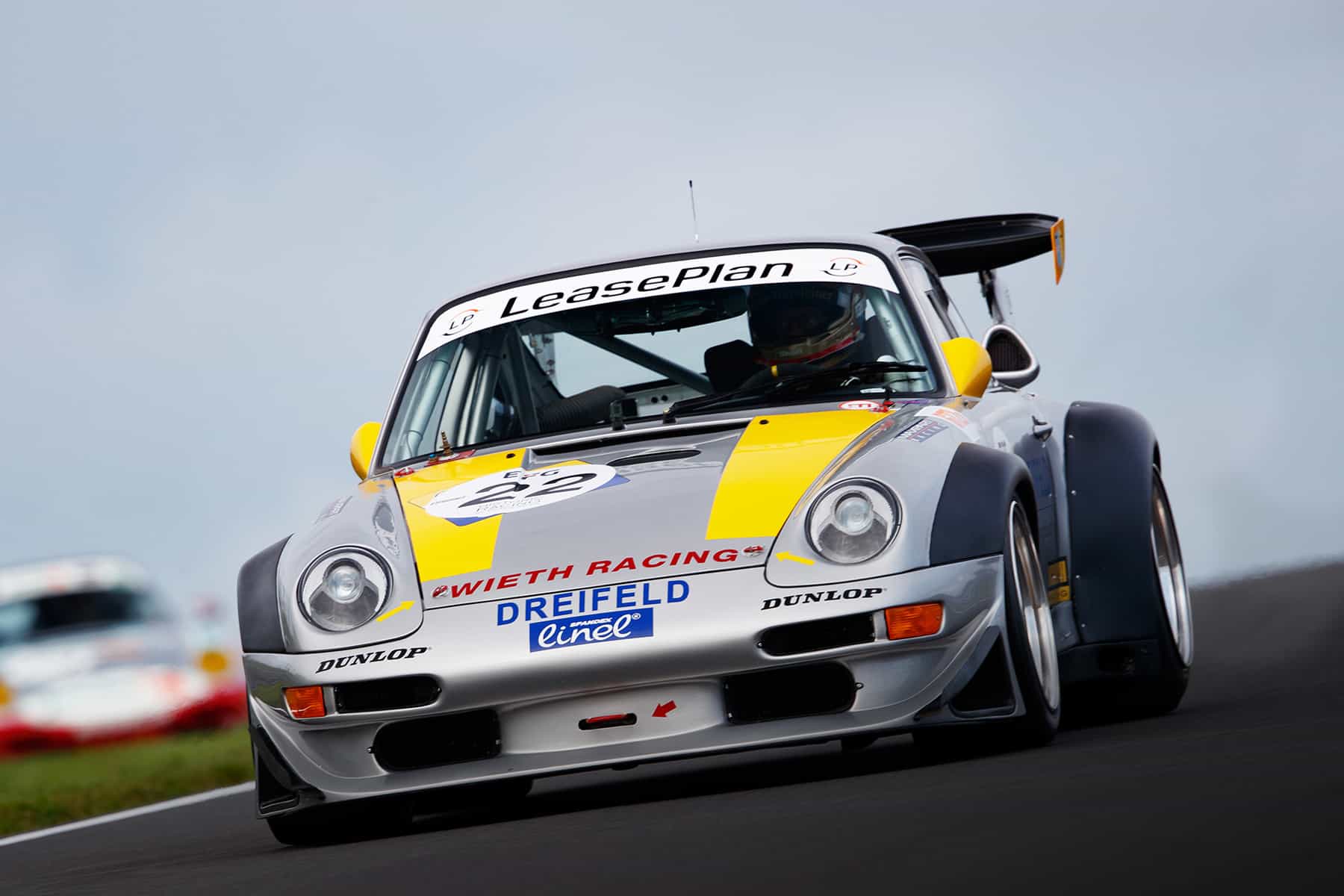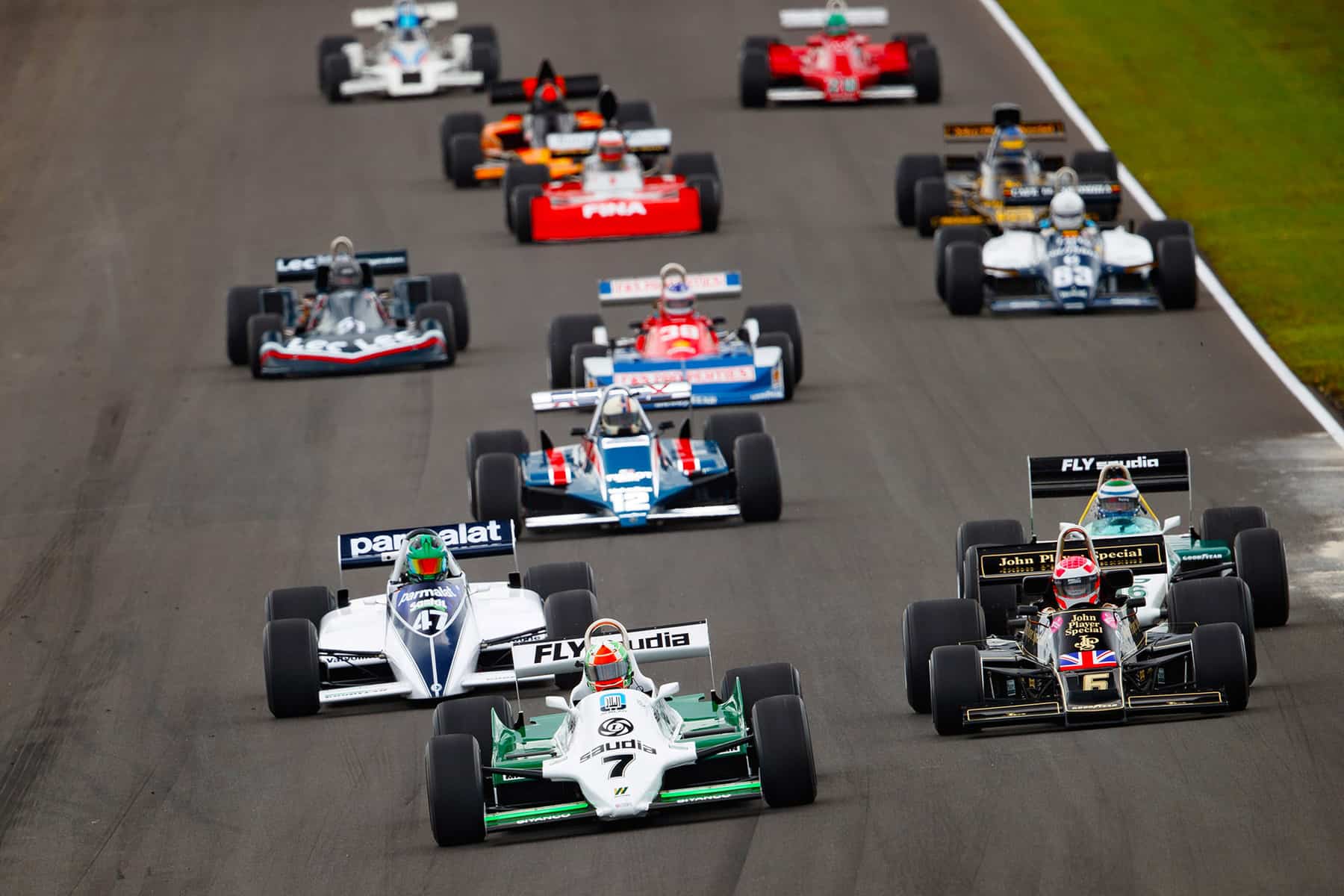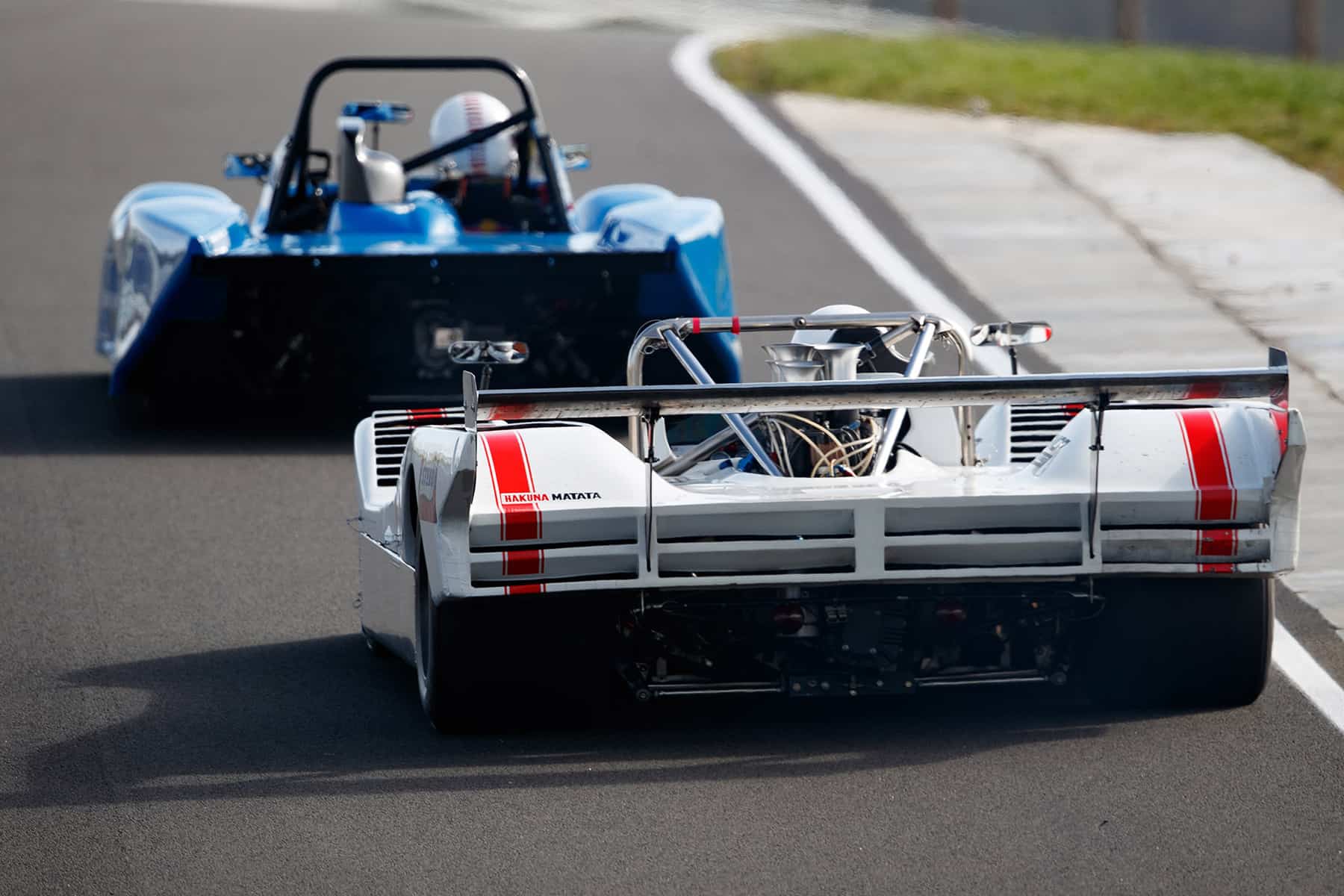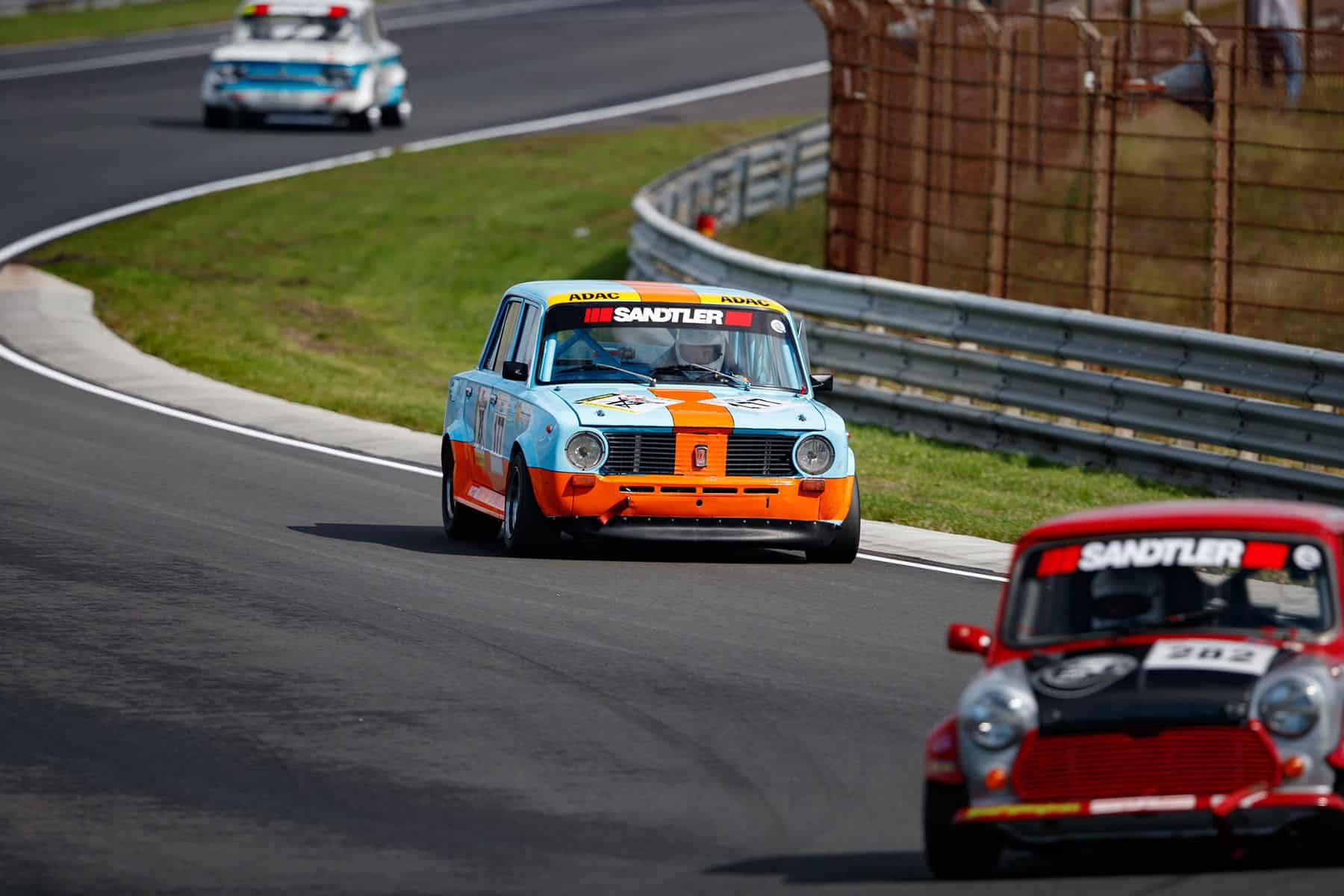Zandvoort Historic Grand Prix
The return of live racing to the fabled Dutch circuit
BY: WOUTER MELISSEN
For more than thirty years, Circuit Zandvoort was the host of the Dutch Grand Prix. The undulating track snaked through the dunes on the Dutch North Sea coast. The layout was dictated by the dunes and followed a road that already existed. The track opened in 1948 and then hosted the first Dutch Grand Prix in 1952.
For a variety of reasons, the 1985 Dutch Grand Prix, with Niki Lauda winning in a McLaren, was the last. The track remained in use, but like so many great old tracks, it fell victim to both project developers keen to get a slice of the valuable land, and local residents prone to complaining about the noise.
Zandvoort victories were scored over the years by great champions, including Ascari, Fangio, Moss, Brabham, Clark, Stewart, Lauda, Hunt, Andretti, and Prost. The track was also the host of many famous firsts, such as the first Grand Prix win for BRM with Jo Bonnier in 1959, the victorious debut of the ground-breaking Lotus 49 in 1967 with Jim Clark behind the wheel and also the only win for the Hesketh team in 1975, courtesy of a stellar drive by James Hunt. As at any track during this period, Zandvoort also had its share of tragedy. Many will recall the heroics of David Purley, who tried to get his compatriot Roger Williamson out of his burning car during the 1973 Dutch Grand Prix. Sadly, Purley’s efforts proved in vain.
In 1989, the track was drastically shortened, but fortunately it was not completely paved over, which is what happened to the Riverside International Raceway. Most of the iconic corners were saved, but the main straight was effectively cut in half. One of the major international events that ensured the track remained relevant was the high-profile Masters of Formula 3. Among the winners over the years were the likes of David Coulthard, Takuma Sato, Lewis Hamilton, and Max Verstappen. In 1998, Circuit Zandvoort regained some semblance of its former self by adding a loop to the back section of the track. This saw the length of the track go from 2.5 km back up to 4.3 km. Nothing could be done to the length of the straight; where the final corner once was, there was now a park full of vacation homes.
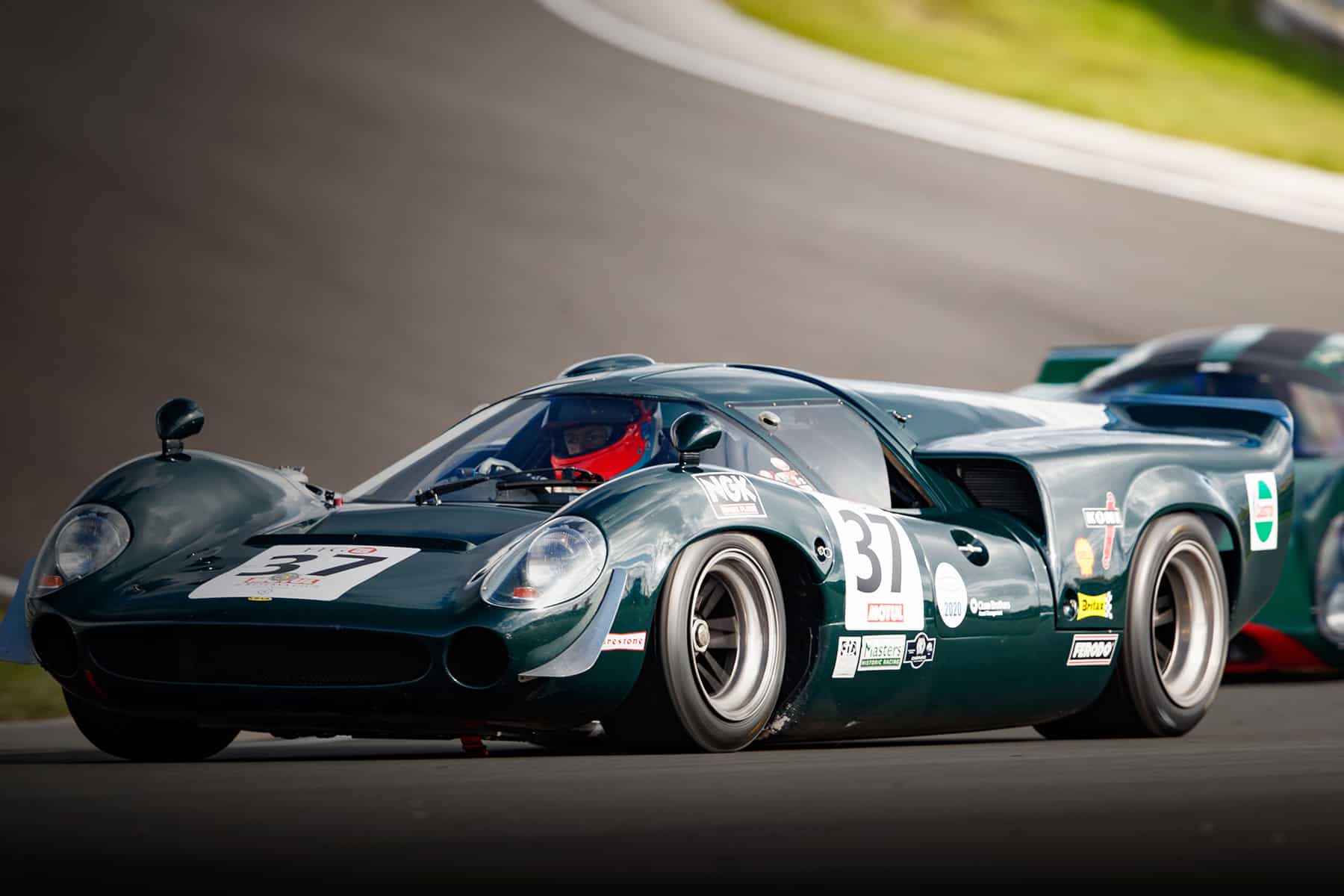
The meteoric rise in Formula 1 of Dutchman Max Verstappen, the 2014 Masters of Formula 3 winner, resulted in a fast-growing call to hold the first Dutch Grand Prix since 1985. Whether this was a good idea in the first place and which track should then host the event was the subject of much public debate. Eventually, both Zandvoort and Assen, the annual host of a MotoGP race, pitched a proposal to the powers that be. In the end, Zandvoort was assigned to run the 2020 Dutch Grand Prix under the condition that changes were made to the track, facilities, and the infrastructure around the circuit.
The issues with the track that were singled out were the lack of run-off area in the fourth and final corners and the length of the main straight. The latter was a particular problem, as the undulating track was never quite straight for the remainder of the lap, so there would be little room for overtaking. With F1 cars already struggling with overtaking, that would certainly not benefit the show. In what was quite the masterstroke, both issues were resolved by re-profiling the corners. Turns four and fourteen received a banking with an angle more commonly found on oval tracks. Especially in the final corner, this creates a slingshot effect that allows the cars to enter the main straight at a much higher speed.
At a remarkably rapid rate, the various sections of the Circuit Zandvoort were improved. In addition to the work on the actual track, the paddock was also refreshed. A new section was added to the pit building, which increased the size of the individual pit boxes. A second pedestrian tunnel was also added to improve access to the paddock. Sadly, the work ground to a halt earlier this year, as the Dutch Grand Prix was canceled. Considering the vast amounts spent on rebuilding the track, the local organizers were not interested in running the race without the public. As a result, rescheduling the race for later in the year was not an option, so the Dutch Grand Prix will not return until 2021.
Fortunately, some of the events on what is now known as CM.com Circuit Zandvoort remained on the schedule. Among them was the annual Historic Grand Prix held during the first weekend of September. It was the first international event to be held on the redesigned track. Due to travel restrictions, not all of the series initially scheduled to compete made it, but fortunately the Masters championships did line-up for the weekend. One of these championships is for 1970s and 1980s Grand Prix cars, so these were the very first Formula 1 cars to sample the track. Making the debut at Zandvoort was the Aston Martin Masters Endurance Legends series for recent sports prototypes and GT racers. Other highlights included the German 100 Meilen Trophy with a diverse field that included several Can-Am cars and the Kampf der Zwerge, which translates to Battle of the Dwarves and included a Gulf-liveried Lada.
Competing in three different cars during the 2020 Historic Grand Prix was successful historic racer and TV pundit Sam Hancock. Despite his long career, he had only raced at Zandvoort once: “My only previous visit was nearly twenty years ago for Kremer Racing in a Porsche 962, and I barely remember a single corner.” Even for a seasoned professional, Zandvoort proved a steep learning curve: “After all these years of racing, it’s not only a refreshing challenge to have to think about learning a circuit as well as working on the car, but this particular circuit is really challenging, in a way that I think is only really relevant to the old-fashion style circuits that seem to be formed more organically. None of the corners feel geometrically designed.”
Hancock continues: “And there is often two or even three possible lines that would be appropriate, and it takes a lot of time, a lot of experimentation, and some feel, to establish what is fastest. And even then, one variation may suit a particular car more than another. Combine this challenge with that of the bravery required in some of the faster turns, and you really have an exciting circuit. I absolutely loved it! And even after an entire race weekend, competing in three different grids, I still feel like I am a long way from executing the perfect lap. Along with Monaco, Le Mans, Thruxton, and other circuits like these, I always think that is a nice signature of a circuit. A place that feels somewhat impossible to conquer. As though it is constantly teasing you, and gently laughing at your attempts. It’s nice to be challenged in this way; I really enjoy having to think harder about my driving, dig deeper, and search for more courage and precision.”
Although Hancock did not remember much from the original configuration, the modified sections certainly did not feel like an afterthought: “I can say that the steep banking at T4 and in the final corner added tremendous character to the circuit and felt very authentic, very in keeping with the rest of the lap, and to be honest if I did not know differently, I would totally assume that it had always been this way.” While both corners are banked, they offer different challenges: “As fast as the final corner is, it is actually pretty straightforward. Easy flat in most cars, although it certainly got my attention when trying to do the same in the 1960s Jaguar E type! It’s more a question of mind over matter. Most cars can easily go through it without lifting, but because the corner is long and therefore the entry is blind, it requires some exploratory laps to build up to this. In the end, once you have done it once, it is quite easy to repeat.”
The same cannot be said about turn four: “This is very technical, and different cars respond to the banking in different ways. Some are very compliant as you drop into it on the corner entry, whereas other, stiffer cars, are heavily destabilized and require a different entry line.” Finding the right line through the corner is a challenge: “You can stay high and wide, entering from the right hand side and drop late into the banking in order to maintain a stable car and drive into the apex with momentum. But this adds considerable distance to the lap and must be carefully measured against the shorter line where you turn in earlier but have to navigate the steep drop into the banking that comes right in the middle of the hard braking phase. But the turn is even more complicated because it continues further around than you can initially see. It is very easy to apex too early and enjoy the feeling of the banking supporting the car as you bury the throttle. However, as the corner rises towards the exit, you realize it is still turning left and it is therefore easy to find yourself exiting too early and having to lift off in order to stay on the circuit. With the steep hill at that moment, this lifting is hugely destructive to exit momentum, and time will be immediately lost with the penalty being paid all the way until the next braking point some two or three corners later. In the end I think I found a balance between these various techniques, but it is very hard to repeat identically on every lap. And as frustrating as that can be, it is also a really nice and rewarding challenge.”
So due to unforeseen circumstances, the first Grand Prix cars to sample the redesigned Circuit Zandvoort were those competing in the Masters Formula 1 Championship. All things considered, the fifteen-strong field was quite impressive. One of the most highly anticipated cars was a freshly built Tyrrell P34, but unfortunately the owner/driver was stuck in the U.S., so it only appeared in two demonstration laps. Throughout the weekend it was Mike Cantillon who dominated the proceedings with his 1981 Williams FW07C, prepared by CGA Engineering. He won both twenty-five-minute races and set what should remain the lap record until the 2021 Dutch Grand Prix, with an average speed of 163.3 km/h. In a way, this was a fitting tribute to the Williams family, who left the sport at the end of the same weekend.
Perhaps the most interesting field of the weekend was the Aston Martin Masters Endurance Legends. A relatively new addition, this was open to sports cars and prototypes from the last twenty-five years. Sharing the driving duties with the car’s owner, Hancock competed in this race with an Aston Martin DBR9. They finished fifth in the first race and third in the second. Taking the victory in race one was Jack Dex, who used a BR 01 Le Mans Prototype. This car was one of eight built for the team’s 2015-2016 campaign and was actually never used in period. Beautifully prepared by BBM Sport, it is effectively a new racing car. Among the earlier cars in this grid was a mighty Porsche 911 GT2 driven by Sebastian Glaser. Underlining the effectiveness of the banked turn fourteen, he reported that he was already in fifth gear traveling at 230 km/h when he entered the main straight.
The best news of the weekend was that, despite the concessions made to host a Formula 1 race, Circuit Zandvoort has not lost its unique and much-loved look and feel. Hancock was equally impressed: “Personally, I cannot wait to return. In the meantime I will watch Formula 1’s return there with astonishment and bewilderment! I think it is fantastic that they are returning but the circuit is so wildly different from the wide open and comparatively safe circuits that we have become accustomed to in Grand Prix racing today. I can not imagine how small and fast it will feel to the F1 boys, but I am excited to find out.”

